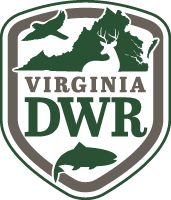Virginia Department of Wildlife Resources (DWR) Aquatic Wildlife Resources staff routinely samples non-tidal river fisheries throughout the Commonwealth. These fisheries generally offer the opportunity to catch Smallmouth Bass, sunfish, catfish, and in some areas Musky and Walleye. The report below summarizes results from 2023 sampling efforts and forecasts what anglers can expect in 2024.
Download the 2024 Virginia Non-Tidal River Fishing Forecast
For more information on non-tidal river fishing in Virginia, contact the following regional offices:
- Staunton River and Middle James River: Farmville Office (434) 392-9645
- Upper James River: Forest Office (434) 525-7522
- New, Clinch, and North Fork Holston Rivers: Marion Office (276) 783-4860
- Rappahannock and Rapidan Rivers: Fredericksburg Office (540) 889-4169
- Shenandoah, Maury, North, and South Rivers: Verona Office (540) 248-9360

